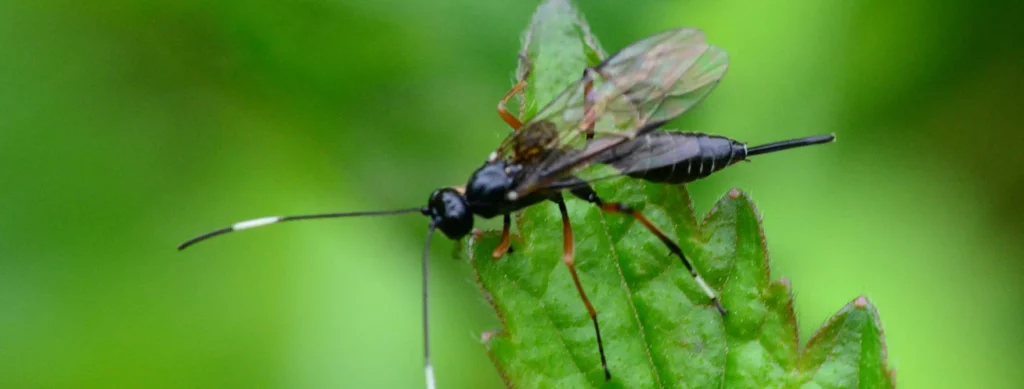Charles Darwin’s theory of Natural Selection was said to have been inspired by apes, but in reality, there was another species that truly influenced Darwin’s theory. Have you heard of parasitoid wasps?
Charles Darwin’s faith in God was seriously shaken by parasitoid wasps, who inject their eggs into caterpillars and eat their still-alive hosts from within when they hatch. This eventually gave rise to Darwin’s theory of Natural Selection.
What are Parasitoid Wasps?
A broad collection of hymenopteran superfamilies known as parasitoid wasps are classified in the wasp-waisted Apocrita, except for the wood wasps or Orussoidea. As parasitoids, they lay their eggs on or inside the bodies of other arthropod hosts, eventually resulting in these hosts’ demise. Although some species prefer beetles, flies, or bugs, most prefer hosts from the Lepidoptera group of insects; the spider wasps or Pompilidae only attack spiders.
Parasitoid wasp species differ in the life stage of the host. They attack eggs, larvae, pupae, or adults. In terms of parasitism, they primarily adhere to one of two major strategies: either they are endoparasitic, growing inside the host, and koinobiont, allowing the host to continue to eat, grow, and molt; or they are ectoparasitic, growing outside the host, and idiobiont, instantly paralyzing the host. (Source: National Library of Medicine)
The Relationship with Polydnavirus
A special class of insect viruses is known as polydnaviruses. They interact mutually with some parasitic wasp species. An adult female parasitoid wasp’s oviducts are where the polydnavirus reproduces.
The virus protects the parasitic larvae inside the host by reducing the host’s immune response and changing the host’s cells in a way that is more advantageous to the parasite—the wasp gains from this connection, Because the viruses have been included in the wasp’s genome and are inherited, the interaction between these viruses and the wasp is compulsory since everyone is infected with them. (Source: National Library of Medicine)
The Life Cycle of Parasitoid Wasps
The parasitoid egg hatches into one, two, or more larvae on or inside the host. Endoparasitoid eggs can expand significantly from the originally laid until they hatch by absorbing fluid from the host body to compete with other parasitoid larvae. The first instar larvae are frequently mobile and may develop strong mandibles or other features. The subsequent instars typically resemble grubs more.
Larvae of parasitoids lack a rear entrance and have an underdeveloped digestive system. By doing this, their wastes are kept away from the hosts. The host is usually already dead or very close to being, so when the larva begins feeding on the tissues until it is ready to pupate. As the larva transforms into a prepupa, meconium, or the collected wastes from the larva, are cast forth.
The parasitoid may subsequently consume its way out of the host or stay in the essentially empty skin, depending on its species. In either scenario, it often pupates after spinning a cocoon.
When parasitoid wasps are adults, nectar from flowers is their primary food source. Some species’ females will consume host hemolymph to get more egg-forming nutrients. (Source: Gardening Know How)
How Did Parasitoid Wasps Influence Charles Darwin?
The paleontologist Donald Prothero points out that Darwin and other devout Victorians were outraged by this instance of blatant cruelty in nature, which is especially visible in the Ichneumonidae.
I cannot persuade myself that a beneficent and omnipotent God would have designedly created parasitic wasps with the express intention of their feeding within the living bodies of Caterpillars.
Charles Darwin
(Source: Darwin Project)
